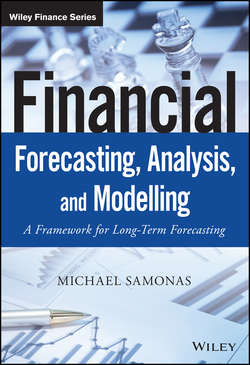Читать книгу Financial Forecasting, Analysis and Modelling - Michael Samonas - Страница 4
На сайте Литреса книга снята с продажи.
Preface
ОглавлениеOver the past several years, spreadsheet models have been the dominant vehicles for finance professionals to implement their financial knowledge. Moreover, in the aftermath of the recent financial crisis the need for experienced Financial Modelling professionals has steadily increased as organizations need to plan and adjust to the economic volatility and uncertainty. The level of risk in taking certain decisions needs to be projected using proper financial models and the alternative possible outcomes need to be analyzed. One benefit of this type of analysis is that it helps companies to be proactive instead of reactive. They can avoid or at least mitigate potential negative results that may stem from influences in their industry or within the business itself.
This book provides a step-by-step guide that takes the reader through the entire process of developing long-term projection plans using Excel. In addition, by making use of various tools (Excel's Scenario Manager, sensitivity analysis, and Monte Carlo simulation) it provides practical examples on how to apply risk and uncertainty to these projection plans. Although these projections are not guarantees they can help organizations to be better informed, and thereby provide peace of mind.
Financial Forecasting, Analysis and Modelling: A Framework for Long-Term Forecasting covers financial models in the area of financial statement simulation. It provides clear and concise explanations in each case for the implementation of the models using Excel. It is relevant to a variety of situations. At the most fundamental level, it can help:
○ Project a company's financial performance;
○ Forecast future cash flows and perform a DCF valuation;
○ Present the good, basic, and bad scenarios of the evolution of the company's debt covenants.
At a more advanced level it ensures that the financial analyst or decision-maker is properly informed and comfortable when called to decide the following types of question:
○ What will be the double impact on the liquidity of the organization of a simultaneous increase of 35 % in turnover and a decrease of 10 days in the credit period provided to clients?
○ What will be the range of the company's net debt at a 95 % confidence level based on selected assumptions?
